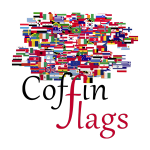Description
 Bangladesh, officially the People’s Republic of Bangladesh, is a country in South Asia. While the country is the 92nd-largest in land area, spanning 147,570 square kilometres (56,980 sq mi), it is the world’s 8th-most populous with nearly 163 million people, making it one of the most densely populated countries in the world. Bangladesh shares land borders with India to the west, north, and east, Myanmar to the southeast and the Bay of Bengal to the south. Dhaka, the capital and largest city, is the nation’s economic, political and cultural hub. Chittagong, the largest seaport, is the second largest city. The dominant geographic feature is the Ganges delta, which empties into the Bay of Bengal the combined waters of several river systems, including the Brahmaputra and the Ganges, with numerous crisscrossing rivers and inland waterways. Highlands with evergreen forests cover the northeastern and southeastern regions. The seacoast features the longest natural sea beach and most of the world’s largest mangrove forest. The country’s biodiversity includes a vast array of plants and wildlife, including the endangered Bengal tiger, the national animal.
Bangladesh, officially the People’s Republic of Bangladesh, is a country in South Asia. While the country is the 92nd-largest in land area, spanning 147,570 square kilometres (56,980 sq mi), it is the world’s 8th-most populous with nearly 163 million people, making it one of the most densely populated countries in the world. Bangladesh shares land borders with India to the west, north, and east, Myanmar to the southeast and the Bay of Bengal to the south. Dhaka, the capital and largest city, is the nation’s economic, political and cultural hub. Chittagong, the largest seaport, is the second largest city. The dominant geographic feature is the Ganges delta, which empties into the Bay of Bengal the combined waters of several river systems, including the Brahmaputra and the Ganges, with numerous crisscrossing rivers and inland waterways. Highlands with evergreen forests cover the northeastern and southeastern regions. The seacoast features the longest natural sea beach and most of the world’s largest mangrove forest. The country’s biodiversity includes a vast array of plants and wildlife, including the endangered Bengal tiger, the national animal.
The national flag of Bangladesh was adopted officially on 17 January 1972. It consists of a red disc on top of a green field. The red disc is offset slightly toward the hoist so that it appears centred when the flag is flying. The red disc represents the sun rising over Bengal, and also the blood of those who died for the independence of Bangladesh. The green field stands for the lushness of the land of Bangladesh. The flag is based on a similar flag used during the Bangladesh Liberation War of 1971, which had a yellow map of the country inside the red disc. In 1972 this map was removed from the flag. One reason given was the difficulty of rendering the map correctly on both sides of the flag. The civil ensign and naval ensign place it in the canton of a red or white field, respectively.







